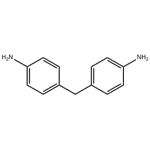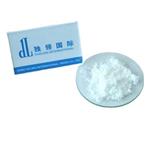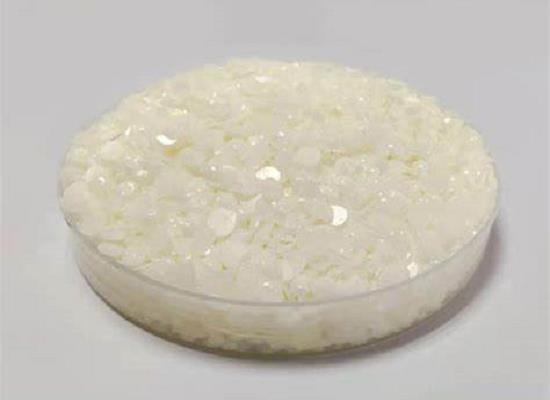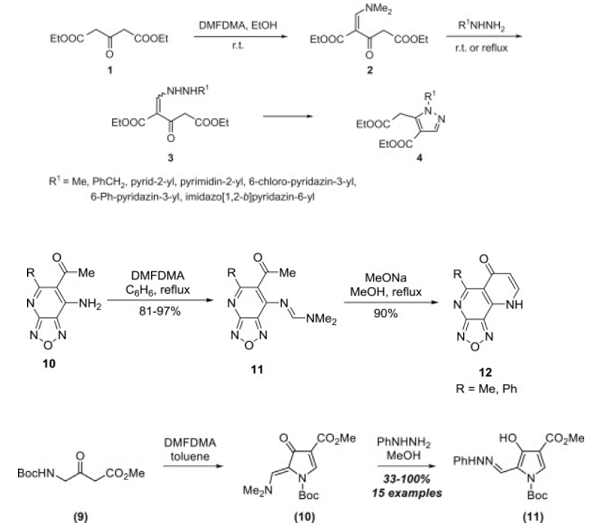4,4'-Methylenedianiline: Genotoxic Properties and its Detection Method
General Description
4,4'-Methylenedianiline is a chemical compound used in various industrial applications such as rubber production and polymer manufacturing. 4,4'-Methylenedianiline exhibits genotoxic properties, raising concerns about its potential carcinogenicity. Research has shown its ability to permeate through skin, with implications for human health. A novel detection method using surface-enhanced Raman spectroscopy (SERS) has been developed to simplify analysis. Studies on plant uptake reveal unexpected behavior, indicating limited root-to-shoot transfer. These insights contribute to a better understanding of 4,4'-Methylenedianiline's impact on human health and the environment, guiding regulatory measures for its management.

Figure 1. 4,4'-Methylenedianiline
Overview
4,4'-Methylenedianiline, commonly known as MDA, is a chemical compound with various industrial applications. Its melting point ranges from 88-92°C, and it has a boiling point of 398-399°C at 768 torr. 4,4'-Methylenedianiline exhibits slight solubility in water and is primarily used as an antioxidant and anti-aging agent in rubber products such as tires, inner tubes, and conveyor belts. Additionally, 4,4'-Methylenedianiline serves as a vulcanization accelerator in hydrogenated butadiene rubber and latex, and an activator in natural and styrene-butadiene rubber. 4,4'-Methylenedianiline is also a key monomer in the production of polyurethanes and polyamides, exhibiting excellent properties like high heat resistance, electrical insulation, and chemical stability. 1
Genotoxic Properties
4,4'-Methylenedianiline is a primary aromatic amine extensively used in the plastics industry, possessing genotoxic properties that raise concerns regarding its potential carcinogenicity. The International Agency for Research on Cancer (IARC) has classified MDA as an animal carcinogen and a possible human carcinogen. Understanding the genotoxicity of 4,4'-Methylenedianiline is crucial for assessing its risks to human health. Studies investigating percutaneous penetration of 4,4'-Methylenedianiline through rat and human skin have been conducted to evaluate human exposure levels. Previous research indicates that both rat and human skin are permeable to 4,4'-Methylenedianiline, with higher penetration rates observed in human skin. However, recent findings from in vitro studies demonstrate no significant difference in percutaneous penetration between human and rat skin across different treatment levels. The apparent dermal flux of 4,4'-Methylenedianiline was calculated at varying treatment levels, indicating its ability to permeate through skin membranes. The permeability constant (Kp) and lag time were also estimated, highlighting MDA's bioavailability once absorbed into the skin. Additionally, experiments assessing MDA penetration through latex and nitrile gloves revealed noteworthy permeation rates. Furthermore, the genotoxicity of 4,4'-Methylenedianiline in human skin was evaluated using DNA (32)P-postlabelling, revealing the formation of DNA adducts following MDA treatment and penetration. These findings underscore the genotoxic potential of 4,4'-Methylenedianiline and emphasize the importance of further research to fully comprehend its impact on human health. 2
Detection Method
4,4'-Methylenedianiline is a significant industrial chemical, but traditional analysis methods are cumbersome, involving multiple steps like extraction and derivatization leading to GC/MS or HPLC analysis, which are time-consuming and resource-intensive. To address this, a novel detection method using surface-enhanced Raman spectroscopy (SERS) has been developed. This method allows for rapid quantification of 4,4'-Methylenedianiline in industrial grease samples, with a concentration range of 1-40 ppm. Compared to conventional techniques, SERS reduces sample preparation and analysis time by over an hour while maintaining accuracy, specificity, and dynamic range. Additionally, to understand the transfer of 4,4'-Methylenedianiline within plants, pressure chamber and intact plant methods were employed. The transpiration stream concentration factor (TSCF) of 14 C-labeled 4,4'-Methylenedianiline was measured in tomato and soybean plants. Surprisingly, the TSCF values were lower than predicted based on the chemical's properties, indicating limited root-to-shoot transfer. This discrepancy suggests that 4,4'-Methylenedianiline's sorption to root materials is more substantial than expected, influencing its movement within plants. Overall, these findings shed light on the behavior of 4,4'-Methylenedianiline in both industrial and environmental contexts, offering insights for better management and regulation of this chemical. 3
Reference
1. 4,4'-Methylenedianiline. National Center for Biotechnology Information. 2024; PubChem Compound Summary for CID 7577.
2. Kenyon SH, Bhattacharyya J, Benson CJ, Carmichael PL. Percutaneous penetration and genotoxicity of 4,4'-methylenedianiline through rat and human skin in vitro. Toxicology. 2004; 196(1-2): 65-75.
3. Kleinman SL, Peterman MC, Benhabib M, Cheng MT, Hudson JD, Mohler RE. Rapid Quantification of 4,4'-Methylenedianiline by Surface-Enhanced Raman Spectroscopy. Anal Chem. 2017; 89(24): 13190-13194.
);Related articles And Qustion
Lastest Price from 4,4'-Methylenedianiline manufacturers

US $50.00-1.00/KG2024-03-25
- CAS:
- 101-77-9
- Min. Order:
- 1KG
- Purity:
- 99%
- Supply Ability:
- g-kg-tons, free sample is available

US $30.00/kg2024-02-27
- CAS:
- 101-77-9
- Min. Order:
- 1kg
- Purity:
- 99%
- Supply Ability:
- 20




